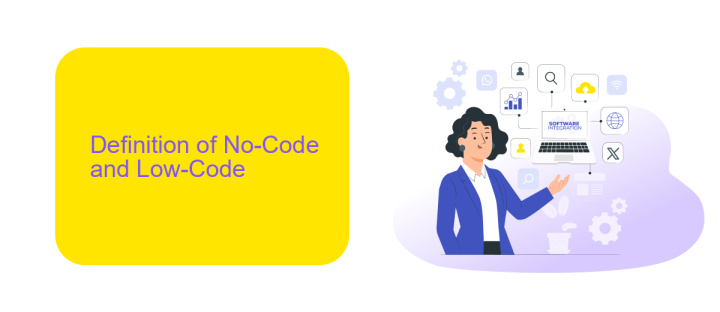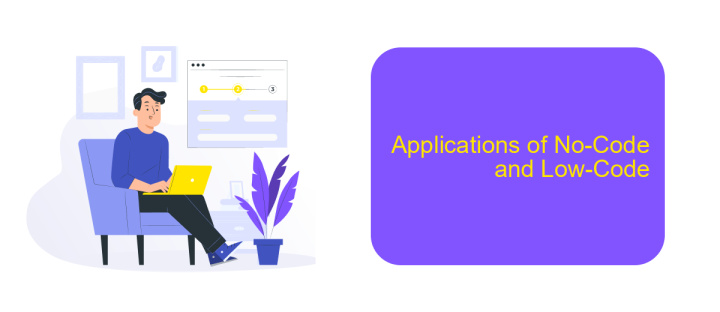Microsoft No-Code Low-Code
In today's fast-paced digital landscape, Microsoft is revolutionizing the way businesses develop applications with its No-Code/Low-Code platforms. These innovative solutions empower users of all technical backgrounds to create sophisticated apps without extensive programming knowledge. By streamlining the development process, Microsoft No-Code/Low-Code tools are democratizing technology, fostering innovation, and accelerating digital transformation across industries.
Introduction
In today's fast-paced digital landscape, businesses are constantly seeking ways to streamline operations and accelerate innovation. Microsoft No-Code Low-Code platforms offer a powerful solution, enabling users to build applications and automate workflows without extensive programming knowledge.
- Empower non-developers to create functional apps
- Reduce development time and costs
- Integrate seamlessly with existing systems
- Enhance collaboration across teams
One of the key benefits of these platforms is their ability to integrate with various services effortlessly. For instance, tools like ApiX-Drive can be utilized to set up integrations quickly, ensuring that data flows smoothly between different applications. This flexibility allows organizations to adapt to changing needs and stay competitive in a dynamic market.
Definition of No-Code and Low-Code

No-Code and Low-Code platforms are revolutionizing the way applications are developed by enabling users to create software with minimal to no programming knowledge. No-Code platforms are designed for users who do not have any coding experience, allowing them to build applications through visual interfaces and pre-built templates. These platforms often include drag-and-drop functionalities, making it easy to assemble and deploy applications quickly.
Low-Code platforms, on the other hand, cater to both developers and non-developers by providing a more flexible environment that requires some basic coding skills. These platforms offer visual development tools along with the ability to write custom code, giving users more control over the application's functionality. Services like ApiX-Drive can be integrated into both No-Code and Low-Code platforms to automate workflows and connect various software applications seamlessly, enhancing the overall efficiency and functionality of the developed solutions.
Benefits of No-Code and Low-Code

No-code and low-code platforms offer numerous benefits, making them increasingly popular among businesses and developers. These platforms empower users to create applications without extensive coding knowledge, significantly reducing development time and costs.
- Speed and Efficiency: Rapid prototyping and deployment are achievable, allowing businesses to respond quickly to market demands.
- Cost Savings: Reduced need for highly skilled developers lowers overall project costs.
- Accessibility: Enables non-technical users to participate in the development process, fostering innovation.
- Integration Capabilities: Tools like ApiX-Drive facilitate seamless integration with various services, enhancing functionality.
- Flexibility and Scalability: Easily adaptable to changing business needs and scalable as the organization grows.
In addition to these advantages, no-code and low-code platforms simplify the integration of third-party services. For instance, ApiX-Drive allows users to connect different applications effortlessly, automating workflows and improving overall efficiency. This makes it easier for businesses to leverage existing tools and data, driving better decision-making and operational excellence.
Applications of No-Code and Low-Code

No-code and low-code platforms are revolutionizing the way businesses develop and deploy applications. These tools enable users with minimal or no programming knowledge to create functional applications, thereby accelerating the development process and reducing costs.
One of the key applications of no-code and low-code platforms is in automating business processes. By using these platforms, organizations can streamline their workflows, improve efficiency, and minimize human error. This is particularly beneficial for small and medium-sized enterprises that may lack extensive IT resources.
- Custom Application Development
- Business Process Automation
- Data Management and Analytics
- Integration with Third-Party Services
For instance, ApiX-Drive is a service that facilitates integration between various applications without requiring extensive coding knowledge. By leveraging such tools, businesses can easily connect their software systems, ensuring seamless data flow and improved operational efficiency. This empowers organizations to focus on their core activities while enjoying the benefits of advanced technological solutions.
Future of No-Code and Low-Code
The future of no-code and low-code development platforms looks promising, as they continue to democratize software creation by enabling non-developers to build applications. These platforms are expected to become more sophisticated, offering advanced features such as AI integrations and improved user interfaces. As businesses increasingly seek to optimize their processes, no-code and low-code solutions will play a critical role in accelerating digital transformation, reducing development time, and lowering costs.
Integration capabilities will be a key focus area, with services like ApiX-Drive leading the way in simplifying the connection between various applications. This will allow users to automate workflows and enhance productivity without needing extensive technical skills. As a result, companies can quickly adapt to changing market demands and innovate at a faster pace. Overall, the future of no-code and low-code platforms holds immense potential for transforming how organizations approach software development and operational efficiency.
FAQ
What is Microsoft No-Code Low-Code?
Who can benefit from using Microsoft No-Code Low-Code platforms?
Can I integrate Microsoft No-Code Low-Code solutions with other software?
How secure are applications built with Microsoft No-Code Low-Code platforms?
What are some common use cases for Microsoft No-Code Low-Code solutions?
Apix-Drive is a universal tool that will quickly streamline any workflow, freeing you from routine and possible financial losses. Try ApiX-Drive in action and see how useful it is for you personally. In the meantime, when you are setting up connections between systems, think about where you are investing your free time, because now you will have much more of it.

